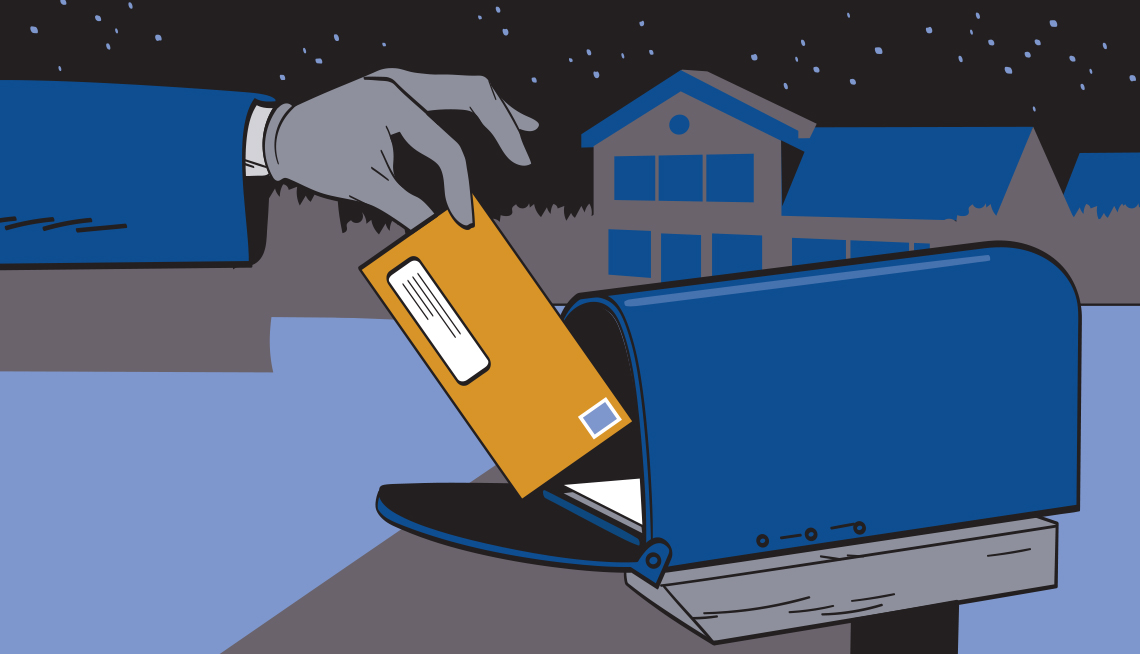Staying Fit
Just hours after leaving a $445 check to his insurance company in his mailbox, Mark McPherson got a shocking call from his bank: A thief had stolen the check, then “washed” and rewritten it for $2,498. “The guy who tried to cash it told the teller he’d done electrical work for me,” says McPherson, 59, who owns a limousine business in Nashville, Tennessee. “He even wrote ‘great job!’ on the memo line.”
The culprit fled when the bank refused to pay. But fraud fighters warn that this crime, called check washing, is on the rise across the U.S., with losses ranging from a few hundred to tens of thousands of dollars. “It is low-tech, but that is actually the appeal,” says Frank McKenna, chief strategist for the San Diego–based fraud detection company Point Predictive. “Almost anyone can do it.”

How it works: Crooks steal checks left in mailboxes or remove mail deposited in U.S. Postal Service collection boxes by using keys stolen from mail carriers or by fishing them out with string and something sticky — like rodent glue traps or a glue-covered bottle. Using cheap chemicals like bleach or acetone (usually bought as nail polish remover), they erase the payee name and amount, leaving the signature intact. After drying, checks are rewritten for more money and deposited or cashed at banks, check-cashing businesses or stores that offer check-cashing services. McPherson says his washed check looked perfect. “They took every bit of ink out except my signature,” he notes.
Check washing is soaring because criminals who stole government stimulus checks and unemployment checks during the pandemic are now looking for new sources of income, McKenna says. “The other reason is that during the COVID pandemic, the Postal Service cut back on the postal police budgets,” he adds. “As a result, mail theft and theft of checks in the mail skyrocketed.”
Jim Kyser, 60, of Merrick, New York, had a $235 check for P.O. box fees washed, rewritten for $9,001.20 and cashed over a November weekend in 2022. Thieves used a stolen key to clean out the mail collection box outside his local post office, where Kyser had left the check on a Saturday evening. It was cashed the next day. “This all happened in 24 hours, the blink of an eye,” he says. When his bank contacted him on Monday, Kyser quickly closed the account.
A washed check could lead to bigger problems, says David Maimon, director of the Evidence-Based Cybersecurity Research Group at Georgia State University. His team, which monitors criminal activities online, has found that some criminals sell washed checks to other criminals for $250 to $600 each. They may also supply buyers with account holders’ Social Security numbers and the size of their bank balances, “so you know how much money you can withdraw,” Maimon says. Bank account and routing numbers may be used to withdraw even more money electronically. Criminals are also using personal identification information on checks as they take out loans, open bank accounts and set up lines of credit in a victim’s name, he adds. “It used to be a very simple crime. Now it’s this beast.”
6 Ways to Foil Check Washers
1. Pay your bills online. “As long as you’re not on a public Wi-Fi connection, paying bills online is safer than a check through the mail,” says Amy Nofziger, AARP’s director of fraud victim support. “Your bank account and the payment systems for your bills are encrypted.”
2. Deliver your mail to a post office. Don’t leave envelopes containing checks in your own mailbox or in outdoor USPS collection boxes after the last pickup time, the U.S. Postal Inspection Service recommends. Best bet: Take your letter to your nearest post office during business hours and either hand it to a clerk or slide it through an outgoing mail slot inside the building.
3. Use a pen with blue or black non-erasable gel ink. Gel ink soaks into paper and may be more difficult to remove than ballpoint pen ink, according to authorities.
4. Don’t let delivered mail sit in your mailbox. Grab your mail every day, as close to the delivery time as possible. If you’ll be away, ask a trusted friend to collect it or have the post office hold it until you’re back home.
5. Monitor your bank account. Don’t wait for your monthly statement. Go online every few days to review account balances and look at checks drawn against them.
6. Report incidents quickly. Contact your bank as soon as possible after suspicious activity; banks are generally required to replace funds stolen via fraudulent checks, but only if the scam is reported within 30 days of the date of your bank statement. Also, contact the U.S. Postal Inspection Service and credit reporting agencies.





































































